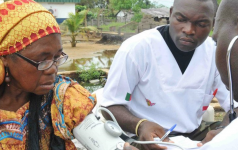Dalberg uses cookies and related technologies to improve the way the site functions. A cookie is a text file that is stored on your device. We use these text files for functionality such as to analyze our traffic or to personalize content. You can easily control how we use cookies on your device by adjusting the settings below, and you may also change those settings at any time by visiting our privacy policy page.
To accelerate the scale-up of chlorhexidine for umbilical cord care, stakeholders have identified demand generation as a key priority in success. To that end, a demand generation toolkit has been designed to support the development and adaptation of tools to drive demand of chlorhexidine. The toolkit is designed for countries and communities in the process of introducing and scaling chlorhexidine and builds upon previous work to increase demand for chlorhexidine and other comparable products.
The toolkit has two parts: 1) a guide which provides details about the concepts, how they can be adapted and used, and how they were developed and 2) an asset library which includes images and editable templates. These files provide a starting point for adapting the concepts in this guide or building your own. The aim is for this combination to make it easier to create sample versions of demand generation materials that can be shared with stakeholders and the communities served.
This toolkit was developed using a human-centered design approach which puts the focus on understanding the people, traditions, and context that inform behavior. This deep understanding then guides the collaborative development of concepts likely to shift behavior to the best outcome. These concepts and materials were developed in partnership with USAID’s Center for Accelerating Innovation and Impact (CII) and Dalberg Design, along with partners and communities in Nigeria (country used as a representative example, which in 2016 is in the midst of its own chlorhexidine scale-up efforts) and partners at the global level.



